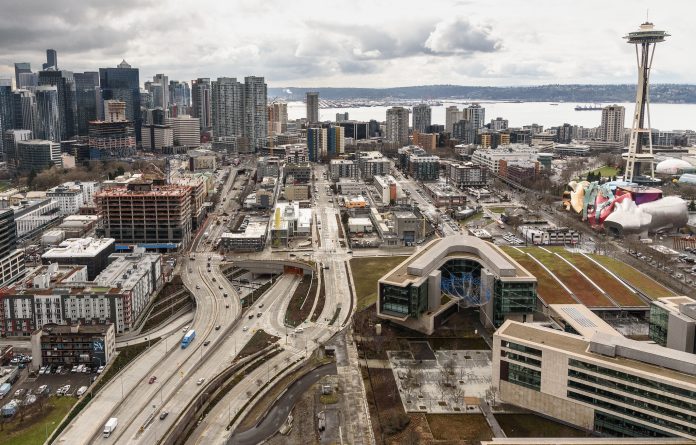
Thanks to a significant cash transfer from the state legislature and a reduction in operating expenses, the near-term financial outlook for the State Route 99 deep bore tunnel in Seattle is looking much rosier than dire economic forecasts suggested as recently as last year. But even these significant aids to the state-operated program haven’t been enough to give the toll facility a healthy long-term financial outlook, suggesting another bailout could be on the horizon — perhaps within a decade.
Last summer, the Washington Transportation Commission, which sets state toll rates, was given a bleak financial picture of the tunnel’s near-term financial future following a post-pandemic recalibration of traffic volume. State Treasurer Mike Pellicciotti’s office portended a “permanent shift” in projected tunnel usage, leading to “insufficient revenues in every year.” Since then, things have shifted to take the tunnel out of that red alert situation.
The single biggest change since last year is the fact that the legislature came to the rescue of the flagship megaproject in the Washington State Department of Transportation (WSDOT) portfolio. This session, the legislature moved around funds in order to buoy the financial picture for the tunnel facility, aided primarily by the $77 million settlement WSDOT secured in late 2022 in its legal battle against Seattle Tunnel Partners, the coalition of businesses formed for the tunnel’s construction. Most notably, $25 million of that settlement went to the state’s general motor vehicle account, $16 million of that being used to repay a loan from the account to the SR 99 account. That erasure from the balance sheet leaves about $13 million remaining from that loan. The tunnel toll program, as initially envisioned, was intended to repay $200 million in debt from the construction of the tunnel in addition to covering its own operating expenses.


WSDOT has also recalibrated its operating and maintenance costs for the tunnel since last year. Those costs are partially related to traffic volumes in the facility, with lower usage translating to lower maintenance costs, generally speaking.
“The reduction in the forecasted Operations and Maintenance costs for the SR 99 tunnel for fiscal year 2024 is based on a reevaluation of underlying cost assumptions resulting from changes in the latest Traffic and Revenue forecasts, and a review of recent year operations and maintenance results,” Christopher Foster, communications manager for WSDOT’s tolling program, told The Urbanist.
Foster elaborated that the department had compared what was actually being spent on operations for the tunnel to its initial forecasts, and that’s what led to the big decreases. He said that they do not have a significant direct relationship with volume forecasts.
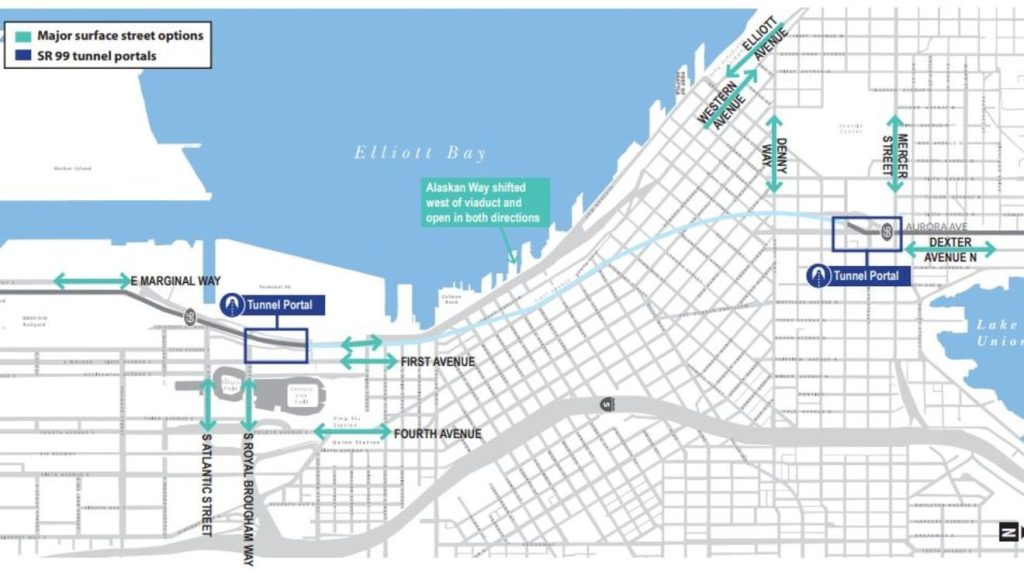
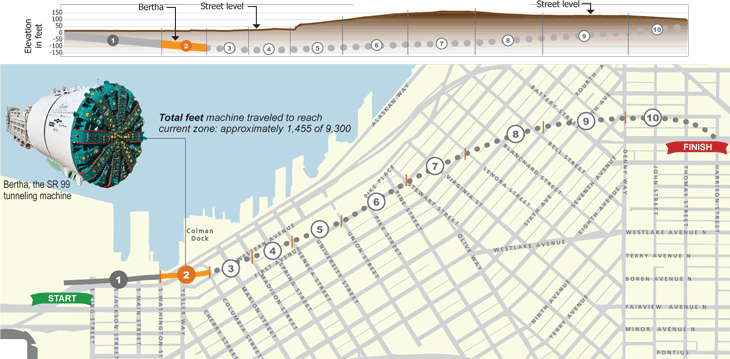
An uptick in traffic volumes is also playing a role, though not as significantly as those other two factors. For the first three months of 2023, volumes in the tunnel were up 11.6% compared to what had been initially projected. But volumes, which average around 40,000 tolled trips per day, remain well below the initial 53,000 daily trips projected for the tunnel’s early years in 2020, projected to rise to 67,400 in two decades.
Even though traffic volumes are headed up, the number of vehicles using the tunnel could be headed for another major reconfiguration. It’s anyone’s guess what will happen to SR 99 tunnel volumes now that four-lane Elliott Way, which provides a quick, toll-free route through Belltown to and from the northeast quadrant of the city, bypassing the at-grade railroad crossing at Broad Street. Now that the final segment of the completed waterfront roadway is open as originally envisioned, the permanent trends in the tunnel can actually play out. On the other hand, potential long-term construction impacts to I-5, as part of the years-long Revive I-5 program could send drivers looking for an alternative through the tunnel.
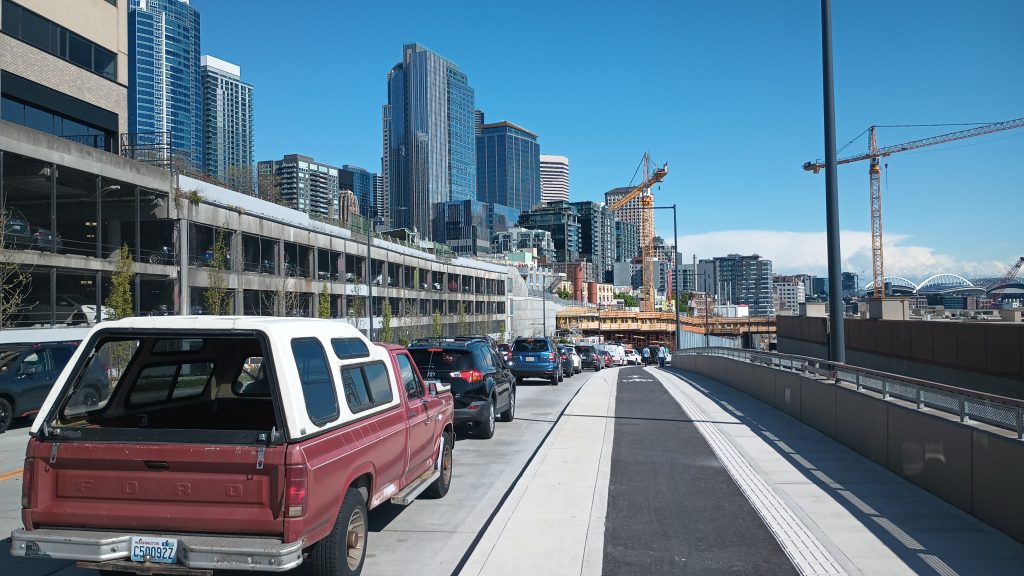
All of those factors have improved the financial picture for the tunnel program, but not indefinitely, with the program still expected to run into the red by the start of the next decade. Jason Richter of the state treasurer’s office told the transportation commission Tuesday that the new forecast was “a lot better news than what we’ve had in the past” for SR 99.
“The takeaway is that there is some room for actions down the road… we’ve got some time,” Richter said, noting that a combination of future rate increases and potential additional actions by the legislature down the road would be able to fill the projected gap of several million dollars per year.
The State Route 520 bridge, by contrast, is showing a positive net revenue forecast long into the future, even as dates on the horizon to repay deferred sales taxes arrive. Volumes on that facility have actually been missing their traffic forecasts in recent months, a fact that was attributed to construction on the Montlake lid project causing short-term closures of lanes and ramps.
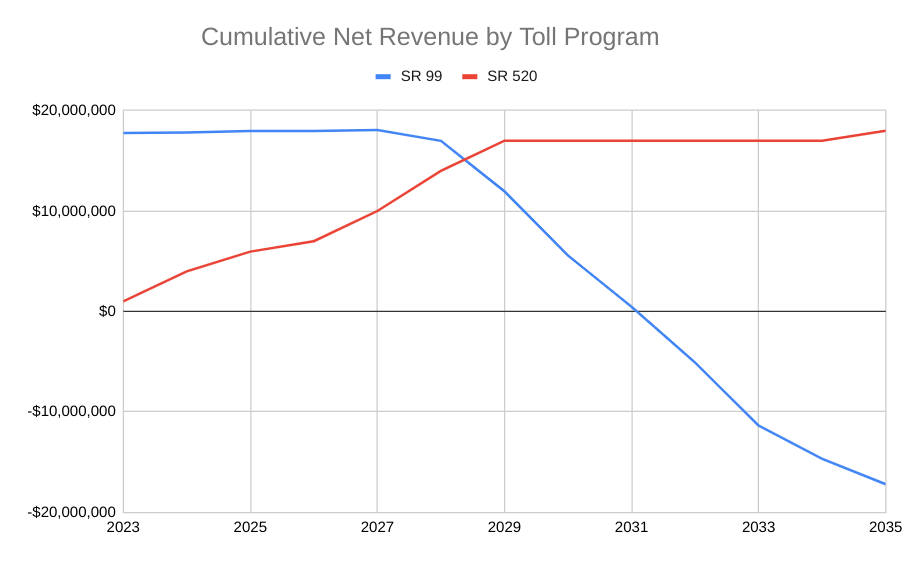
For SR 99, thanks to these recent financial shifts, the balance sheet for the tolling program is expected to remain stable for the next few years, with the revenue generated from tolls directly offsetting costs. But before the end of the decade, those costs are projected to grow faster than revenue coming in, reducing the cumulative amount on the toll program’s balance sheet every year until it’s projected to go negative in 2032.
Thanks to the cash infusion this session, the SR 99 tunnel program can continue to hum along for another few years. But the underlying financial model for the facility remains fundamentally different from the one that was originally envisioned, as projected traffic volumes fail to materialize. The unique position of this tunnel, on a route with a number of free alternatives to drivers, continues to put the controversial tunnel at a considerable disadvantage relative to other toll routes in the state, and paints a picture of financial uncertainty for years to come.
Ryan Packer has been writing for The Urbanist since 2015, and currently reports full-time as Contributing Editor. Their beats are transportation, land use, public space, traffic safety, and obscure community meetings. Packer has also reported for other regional outlets including BikePortland, Seattle Met, and PubliCola. They live in the Capitol Hill neighborhood of Seattle.

